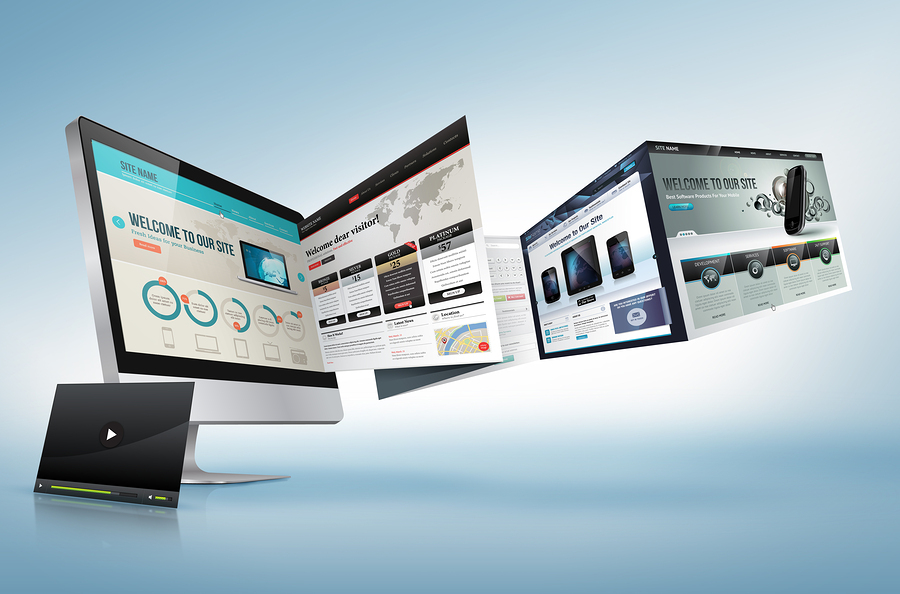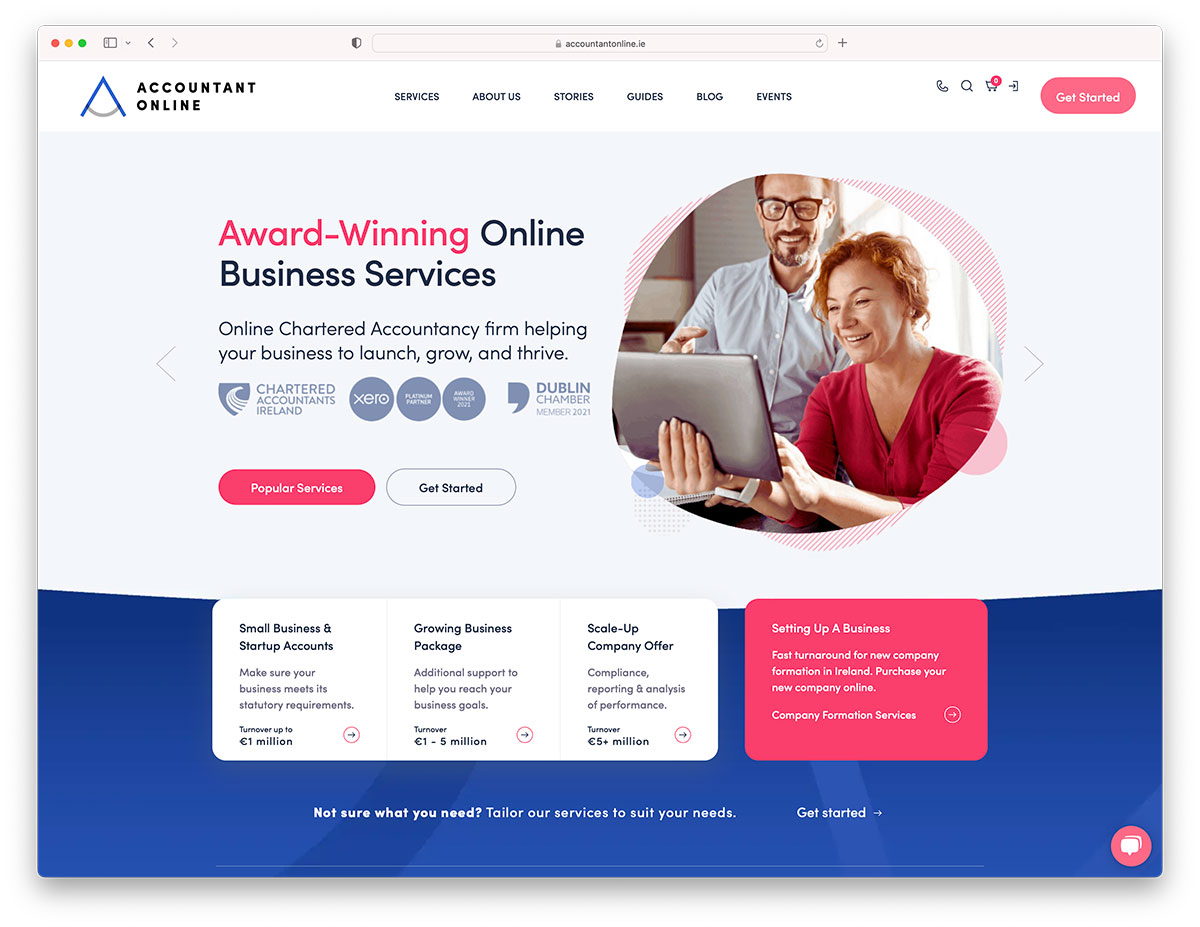How to Choose the Right Shade Combination for Your Website Design
How to Choose the Right Shade Combination for Your Website Design
Blog Article

Crafting a User-Friendly Experience: Essential Aspects of Efficient Web Site Layout
In the world of website design, the relevance of crafting a straightforward experience can not be overstated. Essential elements such as a clear navigation structure, responsive design principles, and quickly packing times function as the structure for engaging users properly. Moreover, an intuitive interface paired with obtainable content guidelines makes certain that all individuals, no matter of capability, can browse easily. Yet, regardless of these essential concepts, many web sites still fail in providing this smooth experience. Comprehending the underlying aspects that add to reliable design can clarify how to boost customer fulfillment and engagement.
Clear Navigating Framework
A clear navigation framework is fundamental to reliable website style, as it directly influences customer experience and interaction. Individuals should have the ability to situate info effortlessly, as intuitive navigating reduces stress and motivates exploration. An efficient design enables visitors to recognize the partnership in between different web pages and content, leading to longer website sees and enhanced interaction.
To attain clearness, developers should use familiar patterns, such as side or leading navigating bars, dropdown menus, and breadcrumb tracks. These aspects not only boost use but also give a feeling of alignment within the site. Additionally, keeping a constant navigating framework throughout all pages is vital; this familiarity aids individuals expect where to discover wanted info.
In addition, incorporating search functionality can additionally help users in situating particular content promptly. In summary, a clear navigating structure is not just a style choice; it is a strategic element that substantially affects the total success of an internet site by fostering a effective and pleasurable user experience.
Responsive Style Concepts
Effective web site navigating sets the stage for a smooth customer experience, which ends up being much more crucial in the context of responsive design concepts. Responsive style ensures that internet sites adjust fluidly to various screen sizes and alignments, enhancing ease of access throughout tools. This flexibility is accomplished with flexible grid layouts, scalable images, and media inquiries that permit CSS to readjust styles based upon the device's attributes.
Key concepts of receptive design consist of fluid designs that make use of portions instead of taken care of systems, making sure that aspects resize proportionately. In addition, using breakpoints in CSS allows the design to shift smoothly in between various tool sizes, maximizing the format for every display type. The use of responsive pictures is additionally vital; photos must automatically readjust to fit the display without losing top quality or causing format shifts.
Furthermore, touch-friendly interfaces are essential for mobile users, with adequately sized switches and user-friendly gestures improving individual communication. By incorporating these principles, developers can create websites that not only look aesthetically pleasing however also offer interesting and functional experiences across all tools. Eventually, reliable responsive design fosters individual fulfillment, reduces bounce rates, and motivates longer engagement with the content.
Fast Loading Times
While customers increasingly anticipate sites to load rapidly, fast filling times are not just a matter of ease; they are vital for keeping visitors and enhancing total customer experience. Research study suggests that users typically abandon web sites that take longer than three secs to load. This abandonment can lead to increased bounce rates and lowered conversions, ultimately damaging a brand name's online reputation and profits.
Rapid filling times boost user interaction and contentment, as visitors are more probable to check out a site that reacts swiftly to their communications. In addition, search engines like Google prioritize rate in their ranking algorithms, indicating that a sluggish web site might struggle to attain exposure in search engine result.

User-friendly Interface
Rapid loading times prepared for an appealing online experience, but they are only part of the formula. An user-friendly interface (UI) is important to ensure visitors can browse a site easily. A properly designed UI allows users to accomplish their objectives with very little cognitive lots, promoting a seamless interaction with the website.
Secret elements of an intuitive UI consist of constant design, clear navigation, and recognizable icons. Uniformity in design components-- such as color pattern, typography, and switch styles-- helps users recognize how to engage with the site. Clear navigating structures, including logical menus and breadcrumb routes, allow users to discover information rapidly, decreasing disappointment and improving retention.
Additionally, responses devices, such as hover results and packing indicators, notify individuals regarding their activities and the site's feedback. This openness grows count on and encourages ongoing engagement. Prioritizing mobile responsiveness makes sure linked here that customers take pleasure in a cohesive experience across gadgets, providing to the diverse ways audiences accessibility content.
Obtainable Web Content Standards

First, utilize straightforward and clear language, avoiding jargon that might perplex visitors. Highlight proper heading frameworks, which not just aid in navigation however also aid display readers in translating content power structures effectively. Additionally, supply alternate message for images to convey their significance to customers who rely upon assistive innovations.
Comparison is another critical component; ensure that message stands apart against the background to improve readability. Moreover, ensure that video and audio material includes inscriptions and records, making multimedia available to those with hearing problems.
Finally, incorporate keyboard navigability into your layout, permitting customers that can not make use of a computer mouse to access all website functions (website design). By sticking to these accessible material guidelines, web developers can develop comprehensive experiences that satisfy the demands of all users, eventually boosting user involvement and fulfillment
Verdict
In conclusion, the assimilation of crucial aspects such as a clear navigating framework, receptive style concepts, quick packing times, an instinctive interface, and easily accessible material standards is essential for producing a straightforward internet site experience. These parts click to read more collectively enhance functionality and interaction, making sure that customers can easily navigate and engage with the website. Focusing on these style components not only improves overall contentment but likewise promotes inclusivity, accommodating varied customer demands and choices in the electronic landscape.
A clear navigating framework is basic to effective web site style, as it straight influences user experience and engagement. In recap, a clear navigation framework is not just a design choice; it is a strategic aspect that considerably affects the total success of a site by promoting a efficient and pleasurable customer experience.
Moreover, touch-friendly interfaces are vital for mobile customers, with adequately sized switches and user-friendly motions improving user communication.While individuals increasingly expect sites to load rapidly, quickly filling times are not just a matter of benefit; they are crucial for maintaining site visitors and improving overall customer experience. website design.In conclusion, the assimilation of necessary components such as a clear navigating framework, responsive style principles, fast filling check it out times, an user-friendly individual interface, and obtainable material standards is important for creating an user-friendly web site experience
Report this page